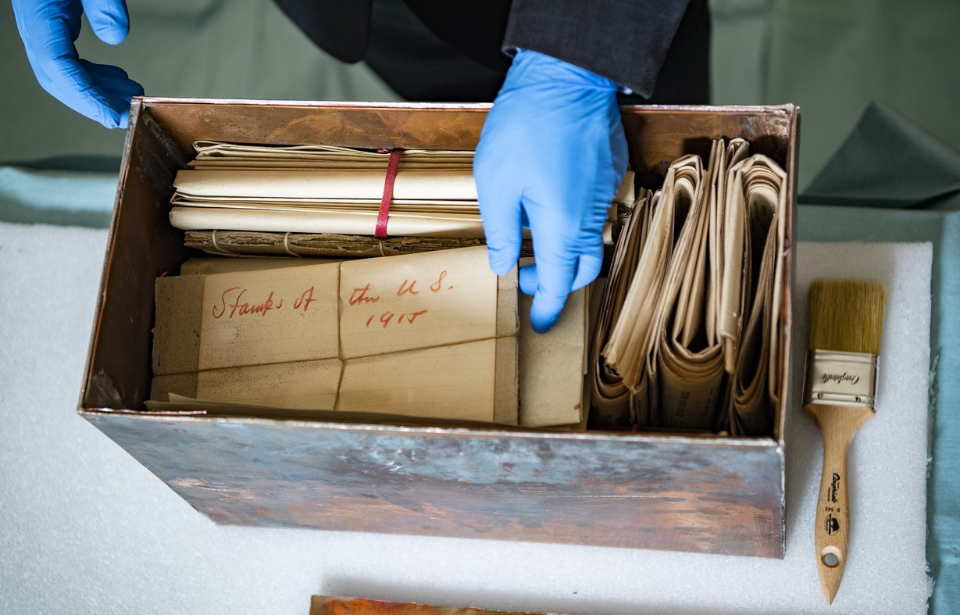In May 2020, archivists and historians at Arlington National Cemetery announced the debut of an online exhibit dedicated to the items found within a 105-year-old time capsule buried within the cornerstone of the Memorial Amphitheater. Years later, the pristine condition in which the items were found and their meaning continue to amaze historians.
Construction of the Memorial Amphitheater
Construction of the Memorial Amphitheater came about due to Decoration Day (now Memorial Day), a time for American citizens to honor military members who have died while serving. Observance of the day originally occurred at the Tanner Amphitheater, but as the years passed it became apparent that a larger location was needed to host attendees.
President William Howard Taft signed legislation approving the construction of the new amphitheater in the early 1900s. It was decided it would be built on top of a hill overlooking Washington, DC. Construction kicked off in 1915, and by Armistice Day on November 11, 1918, almost all of the building’s exterior was complete. Interior construction finished in June 1919.
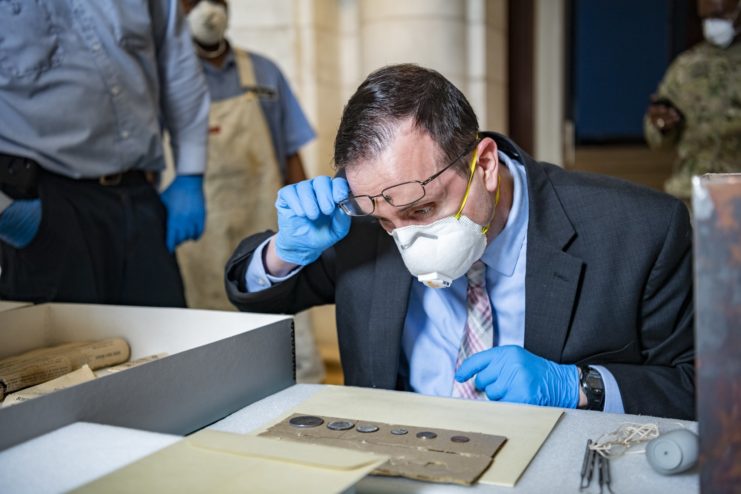
The Memorial Amphitheater was officially dedicated on May 15, 1920. It has a memorial display room, a chapel and is home to the Tomb of the Unknown Soldier, which has been guarded around the clock since 1937.
The time capsule is created
A time capsule was placed within the cornerstone of the Memorial Amphitheater on October 13, 1915 to commemorate the project. Then-President Woodrow Wilson was in attendance, along with 5,000 spectators, who stood together while a band played the national anthem.
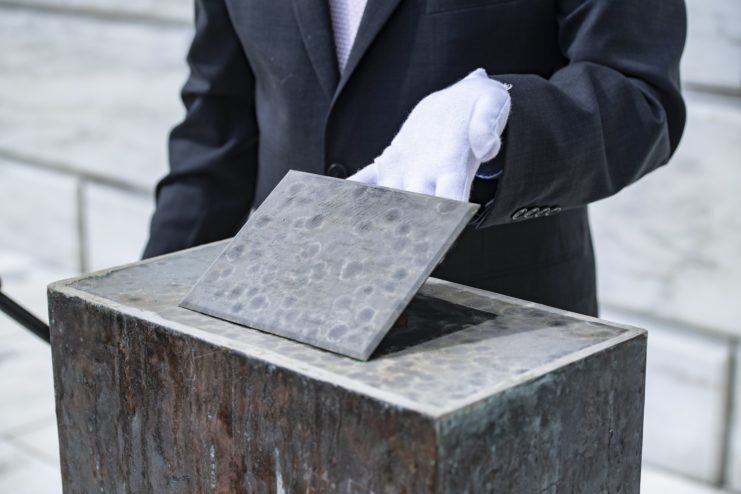
The copper box was filled with a variety of items, including:
- Postage stamps
- An autographed photograph of President Wilson.
- A pamphlet labeled “Confederate Dead.”
- Copies of The Washington Post, The Washington Star, The Washington Times, and The Washington Herald.
- A silk American flag.
- Six coins
- A map of Pierre Charles L’Enfant’s design for the city of Washington, DC.
- A copy of congressional hearings into the Amphitheater, labeled “to be put in cornerstone.”
- Copies of the Constitution, which stopped at the 17th Amendment, and the Declaration of Independence.
- A Bible signed by the Memorial Amphitheater’s architect, Thomas Hastings.
- A program from the 49th encampment of the Grand Army of the Republic.
- A Washington, DC directory.
Word of the memorial box reached the press, with local newspapers focusing on the ways in which the Memorial Amphitheater’s builders had worked to protect it and the items within from the elements.
The Memorial Amphitheater undergoes renovations
While the time capsule was intended to lay undisturbed, it was removed in 1974 during renovations to the Memorial Amphitheater. It was placed in the National Archives while it awaited reinstallation beneath a replica cornerstone at the front of the new viewing terrace. While it was returned to Arlington National Cemetery in 1976, it remained uninstalled until the 1990s.
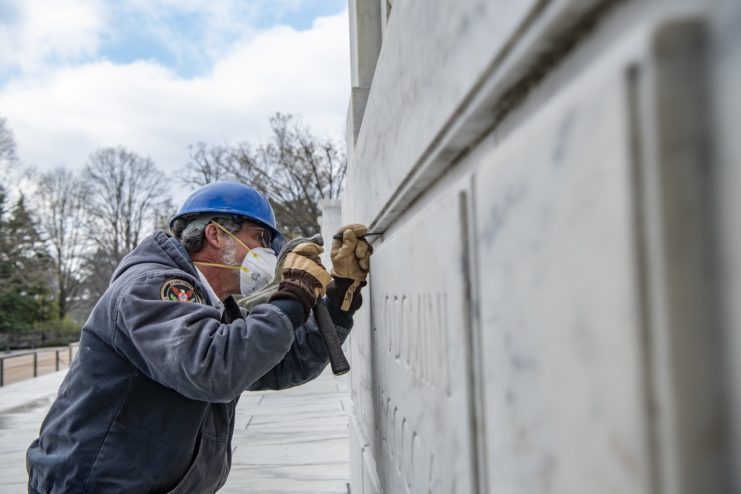
When it was reinstalled, work crews noticed there was some extra space beside the capsule. They took the opportunity to leave their own mark, grabbing an empty jar of peanut butter and placing handwritten notes and business cards in it. They then placed the jar next to the capsule and covered them both.
Opening the time capsule 105 years later
The memorial box was permanently extracted from its new home in March 2020, nearly 105 years since it was buried in the original cornerstone. Prior to it being opened, it was brought the Welcome Center at Arlington National Cemetery to be X-rayed, so conservators could get a better sense of where the items were inside it.
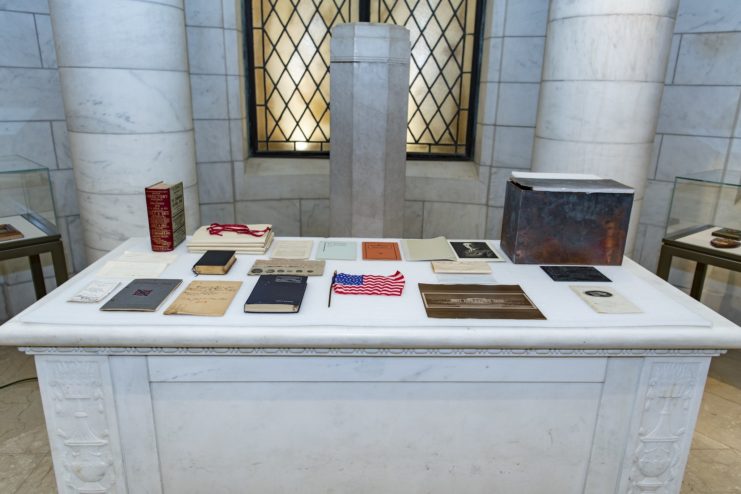
After an over two-hour process to open the capsule, historians and archivists were surprised to see that all the items within were in relatively good condition. This was unexpected, as there had been pooling and condensation on the outside and inside of the outer box. By all appearances, the inner box had been spared from the degradation.
Speaking at the time, conservator Caitlin Smith said, “Everything inside was, as far as we could tell, dry. No signs of mold, most objects were wrapped or tied, everything appeared to be okay.” The American flag had been wrapped in paper, while the Bible was covered in what looked to be either oil cloth or wax paper. While some of the architectural papers had gone brittle, “the papers were mostly still soft, with no staining.”
The flag was of particular interest, as it features only 46 stars, despite there being 48 states at the time of its burial. According to David Ferriero, 10th Archivist of the United States, this is likely because organizers grabbed what was available to them.
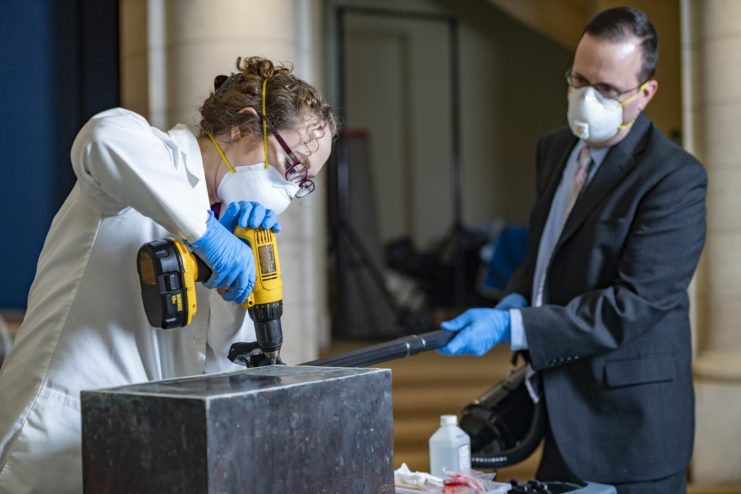
Following the capsule’s removal, plans were announced to place a new one where the original once sat. Unlike the one from 1915, however, it would be made of stainless steel and filled with items donated by those in charge of day-to-day operations at Arlington National Cemetery.
To ensure the items remain safe from the elements, it was announced they’d be put in individual containers and placed beside oxygen absorbers, after which the box itself would be flushed with dry nitrogen before being sealed.
